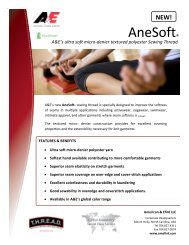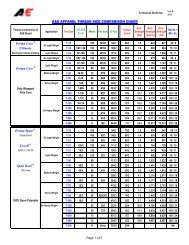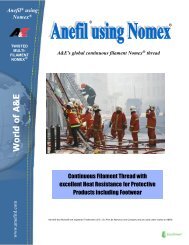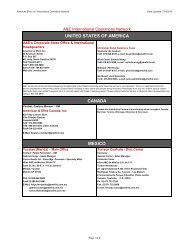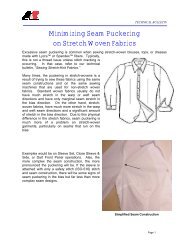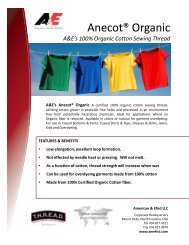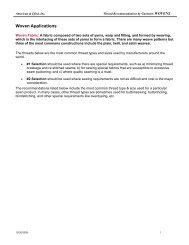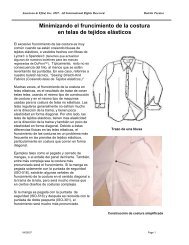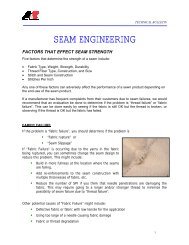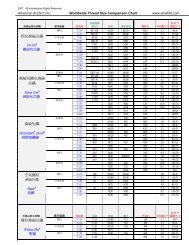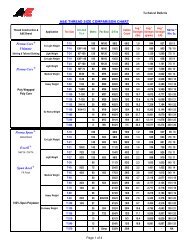STITCHES PER INCH (SPI) - WHAT YOU SHOULD KNOW
STITCHES PER INCH (SPI) - WHAT YOU SHOULD KNOW
STITCHES PER INCH (SPI) - WHAT YOU SHOULD KNOW
Create successful ePaper yourself
Turn your PDF publications into a flip-book with our unique Google optimized e-Paper software.
TECHNICAL BULLETINTherefore, the recommendations listed above are common stitch levels that provide adequate seamstrength but also take into consideration the factors just mentioned.When sewing knit fabrics, you should always check for excessive “seam grinning” of the seam; andalso check for “stitch cracking”. “Seam grinning” occurs when thread stitch balance is too looseallowing the seam to open up too much when stress is applied to it. “Stitch Cracking” is checked byapplying pressure on the seam in the stitching direction. If the thread tensions are too tight or if youare not using enough stitches per inch, the threads will rupture as stress is applied on the seam.Therefore, the following recommendations have been made for the number of stitches per inch to beused on the following garments.KNIT GARMENTSGarments <strong>SPI</strong> Comments Garments <strong>SPI</strong> CommentsJersey T-Shirts,Tops, PolosUnderwear10 - 1212 – 14Infantwear 10 - 12Using more <strong>SPI</strong>increases the chance ofneedle cutting.The more elastic theseam, the more <strong>SPI</strong> thatshould be used tominimize stitch cracking.The more elastic theseam, the more <strong>SPI</strong> thatshould be used tominimize stitch cracking.Swimwear 12 - 16Dresses, SkirtsIntimates10 - 1212 – 16The more elastic theseam, the more <strong>SPI</strong> thatshould be used tominimize stitchcracking.The more elastic theseam, the more <strong>SPI</strong> thatshould be used tominimize stitchcracking.The more elastic theseam, the more <strong>SPI</strong> thatshould be used tominimize stitchcracking.Fleece10 – 12More stitches per inchare required to providethe proper seamcoverage on fleece.Stretch Knits(Lycra®,Spandex®, etc.)14 - 18More stitches per inchare required to providethe proper seamelasticity.Sweaters (Med.To Hvy.)8 - 10The more elastic theseam, the more <strong>SPI</strong> thatshould be used tominimize stitch cracking.Hosiery, Socks35 – 50Usually sewn with veryfine thread. More spiare required to minimizeseam grinning andseam elasticity.SummaryFrom the comments and information listed above, you can see how important adding specificationsfor Stitches Per Inch to your garment specification instructions. Using the correct number of stitchesper inch can greatly enhance the strength, appearance and performance of the seam for a givenfabric type and application. If you need assistance in determining what would be an adequate stitchlevel for your sewn products, please contact A&E’s technical service team for assistance. We lookforward to serving you.Page 4 of 4



